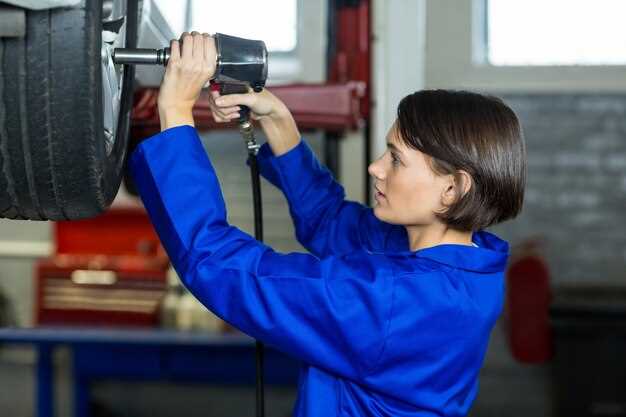
Installing a functional rear wing on your vehicle can significantly enhance its aerodynamic performance, providing increased downforce and stability at high speeds. Whether you are a motorsport enthusiast or just looking to improve your car’s handling, this guide will walk you through the essential steps and considerations involved in adding this component to your ride.
A rear wing is not merely a cosmetic upgrade; it plays a crucial role in improving traction and cornering abilities. Understanding the different types of wings available, as well as how they interact with your vehicle’s design, is key to achieving optimal results. In this guide, we will explore various wing styles, materials, and the adjustments necessary for proper installation.
In addition to the technical aspects, we will cover the tools and equipment you’ll need, safety precautions to take during the installation process, and tips for fine-tuning the wing for your specific driving conditions. Whether you’re aiming for track performance or just want to improve everyday driving dynamics, this comprehensive guide has you covered.
Choosing the Right Type of Rear Wing for Your Vehicle Model

When selecting a rear wing for your vehicle, it’s essential to consider the specific make and model you own. Each car’s design, weight distribution, and intended purpose will influence the effectiveness of different wing types. For instance, a sports car may benefit from a larger, adjustable wing that can provide significant downforce during high-speed driving, while a compact sedan might be better suited to a subtle lip spoiler that enhances aesthetics without overwhelming the vehicle’s design.
Understanding the purpose of the rear wing is crucial. If your primary goal is to improve aerodynamics and downforce for racing or aggressive driving, opt for a performance-oriented design. Adjustable wings offer versatility, allowing you to modify the angle for optimal airflow based on driving conditions. On the other hand, if the goal is primarily cosmetic enhancement, a simpler, fixed wing might be appropriate. This can provide a stylish look while still contributing to a minor aerodynamic improvement.
Material choice also plays a significant role in the wing’s performance and longevity. Common materials include fiberglass, carbon fiber, and aluminum. Carbon fiber, while more expensive, offers a lightweight yet robust option that enhances both performance and aesthetics. Fiberglass tends to be more affordable but may require additional reinforcement, especially for high-pressure applications.
Ensure that the wing is compatible with the vehicle’s dimensions. An oversized wing on a compact car can lead to poor handling and driver discomfort. Conversely, a small wing on a performance vehicle might not offer the necessary aerodynamic benefits. Research the recommended sizes and designs for your specific vehicle model, and consider consulting with professionals or automotive forums for insights on the best options.
Finally, compliance with local regulations and laws is imperative. Some regions have strict guidelines regarding aftermarket modifications, including rear wings. Before making a purchase, check the legality to avoid complications during inspections or road usage. Selecting the right rear wing will enhance your vehicle’s performance while ensuring it remains roadworthy and visually appealing.
Step-by-Step Installation Process for Maximum Stability
To achieve maximum stability when installing a rear wing on your vehicle, follow these detailed steps carefully. First, gather all necessary tools and materials, including a measuring tape, drill, screws, a level, and the rear wing kit.
Begin by selecting the optimal location for the rear wing. Measure the width of your vehicle’s rear section and determine the center point. Mark this spot, as it will serve as the reference for mounting the wing.
Next, hold the rear wing in place at the desired height, ensuring it aligns with the manufacturer’s guidelines. Use a level to confirm that it is straight. Make sure to consider the angle of attack, which is crucial for aerodynamic efficiency.
Once you are satisfied with the positioning, use a pencil to mark the drilling points on your vehicle’s trunk or hatch. Ensure the marks are accurately aligned with the wing’s mounting brackets. Double-check the placement and alignment before proceeding.
Using a drill, create holes at the marked points. Be cautious to avoid drilling too deep, as this can damage underlying components. After drilling, clean any debris from the holes to ensure a secure fit.
Now, attach the mounting brackets of the wing to the drilled holes using the provided screws. Tighten them securely, ensuring the wing is firmly attached to the vehicle. It is essential to check the manufacturer’s torque specifications to avoid over-tightening.
After securing the brackets, recheck the wing’s level and angle. Make minor adjustments as necessary. Test the stability of the wing by gently pushing on it; it should not wobble or shift.
Lastly, double-check all screws and connections, ensuring everything is tight and secure. Once completed, you are ready to enjoy the enhanced stability and performance that a properly installed rear wing offers.
Tuning and Adjusting Your Rear Wing for Optimal Performance

To achieve optimal performance from your rear wing, precise tuning and adjustment are essential. Start by considering the angle of attack, which is the angle between the wing and the oncoming airflow. A higher angle increases downforce but can also lead to additional drag. Conversely, a lower angle reduces drag but may compromise downforce. Experiment with different angles to find the best balance depending on your vehicle’s characteristics and your driving style.
Next, you should evaluate the position of the wing in relation to the vehicle’s body. Positioning the wing too high can create instability, while too low can reduce its effectiveness. Aim for a height that aligns with the center of your rear axle to create the most balanced aerodynamic profile. Also, ensure the wing is mounted securely; any movement can negatively impact its performance.
Adjust the wing’s endplates if present. Properly shaped endplates help manage airflow around the wing and can significantly enhance downforce. Experimenting with their height and angle can lead to improved performance. Additionally, consider adding a small lip or extension to the endplates to further enhance the airflow management.
Test your adjustments in various driving conditions. Performance tuning requires real-world evaluation to gauge how changes affect handling, stability, and lap times. Use data logging tools to monitor changes in downforce and drag, allowing you to make informed adjustments during track days or test sessions.
Finally, consider the impact of your vehicle’s suspension setup. A properly tuned suspension will accommodate the increased downforce generated by the wing. Adjust your spring rates and damping settings to ensure that your setup remains compliant and responsive, maximizing the benefits of your rear wing without causing instability.
